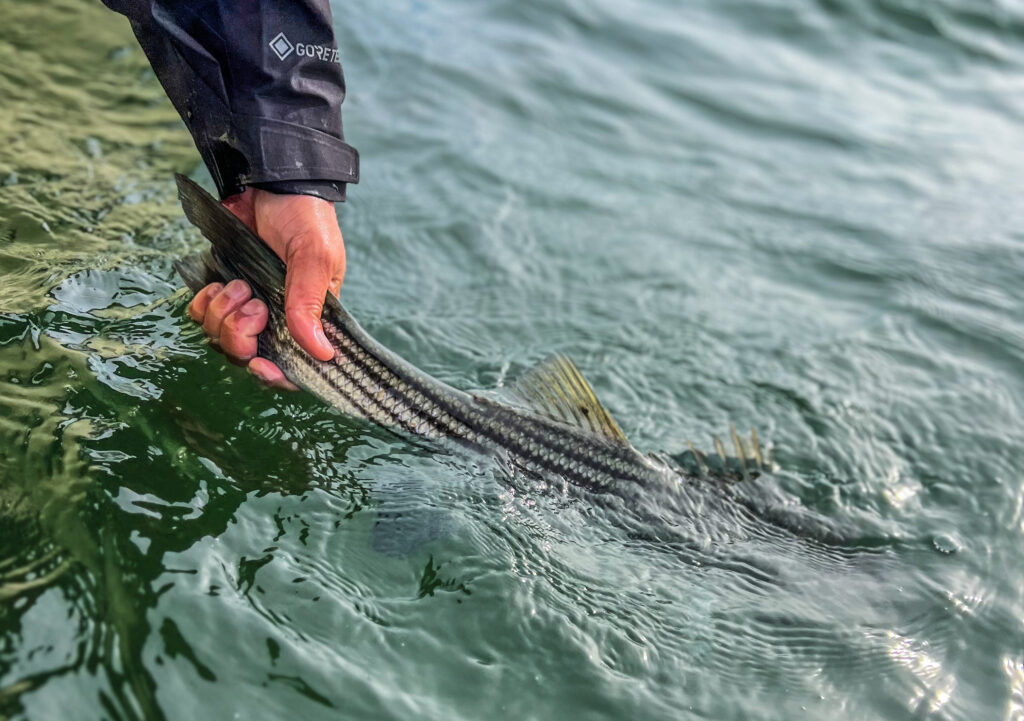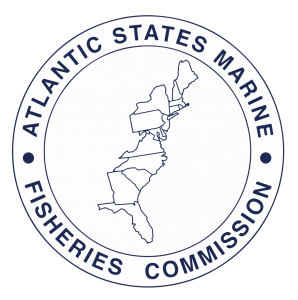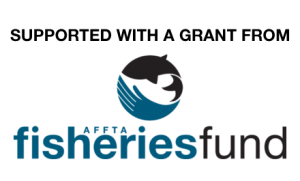ACTION ALERT- ASMFC Addendum II To Amendment 7
ACTION ALERT
Public comment will be accepted until 11:59 PM (EST) on December 22, 2023
ASMFC Addendum II to Amendment 7 to the Interstate Fishery Management Plan for Atlantic Striped Bass
The hope was for Addendum II to go above and beyond the emergency action currently in place. The likely reality is, even with the best options selected by the board, Addendum II will ultimately fail to do enough to get the stock back on track for recovery by 2029. In the face of 5 straight years of very poor, bordering on failed recruitment in the Chesapeake, the board has put forth options which would fail to protect the 2015 year class. In fact, some of the options within Addendum II work directly against the intentions of the original motion from which it was born.
To be honest, we still believe that an equitable (commercial and recreational) harvest moratorium is the most efficient and full proof way to rebuild the Striped Bass stock to abundance. Unfortunately that is not currently an option within Addendum II. While you may feel the same way and want to express that to the board, it is very important that we stay within the bounds of what is currently in the document. Feel free to add your thoughts in your own words but please make sure to clearly state that you support the options below. The stock is still in a bad place and there is very little margin for error. We absolutely need to make sure that the best possible options within Addendum II are selected by the board.
Below you will find our preferences for each of the six sections of options. The bullet points below briefly explain our rationale behind each choice. You can keep things simple and just comment to the board which options you support. You can also add your own reasoning and/or suggestions. The bottom line is, we all need to be part of the process to make our voice heard. The more who speak up in favor of the below options, the better chance we have for a positive outcome.
It is important to note, if you are unable to participate in your state’s scheduled hearing, you are welcome to participate in any of the virtual or hybrid hearings. Click here for the news release on all state public hearings.
The in person hearings are one way to participate but we strongly suggest that you submit written comments to the board. Instructions on how to do so are below.
Thank you for your involvement and continued support!

3.1.1 Ocean Recreational Fishery Options: Support Option B—1-fish at 28 to 31″ with 2022 seasons (all modes).
- There are three goals here; the greatest overall reduction, protecting the 2015-year class and making sure it is done in a fair and equitable way. Option A expands the slot to 28″-35″, Option C and D introduce ‘mode splits’. Essentially, recreational anglers are split into ‘private vessel/shore’ and ‘for-hire’, it is not the right thing to do now or ever. Since the inception of Amendment 7, we have heard from the board and law enforcement that no harvest and no target closures would be too difficult to enforce, the same applies here. All recreational anglers should make an equitable effort to reduce harvest and restore the Striped Bass stock to abundance. Option D shifts the slot up in size and would only do more damage to the 2015-year class as they continue to grow and enter that range.
3.1.2 Chesapeake Bay Recreational Fishery Options: Support Option B1—Apply a standard minimum size limit, maximum size limit, and bag limit to the Bay jurisdictions’ 2022 seasons. The minimum size shall be 19” and the bag limit 1 fish. Maximum size limit of 23”.
- Here we selected Option B1 for several reasons. Most importantly it produces the greatest overall reduction of -22.4% and the greatest harvest reduction of -38.4%. After 5 years of very poor spawns in the Chesapeake Bay, it is time for some simplification and a narrow slot. Option B1, with consistent minimum size, maximum size, and bag limit creates more uniform regulations across the bay. Again, as previously discussed in the ocean recreational options, mode splits are not something we can support in anyway.
3.1.3 For-Hire Management Clarification (if For-Hire Mode-Specific Limits are selected): Support Option B—For-hire management measures apply only to patrons during a for-hire trip; captain and crew during a for-hire trip are subject to the private vessel/shore angler limits.
- We do not support mode splits in anyway, as discussed in the first two sections. Should the board choose to adopt (most likely against public comment) mode splits we should do what we can to minimize the potential damage. Option B only allows the additional harvest to apply to the patrons during a for-hire trip. The captain and crew are subject to the same regulations as private vessel/shore anglers.
3.1.4 Recreational Filleting Allowance Requirements: Support Option B—For states that authorize at-sea/shore-side filleting of striped bass, establish minimum requirements, including requirements for: racks to be retained; skin to be left intact; and possession to be limited to no more than two fillets per legal fish. States should consider including language about when and where racks may be disposed of, specific to each mode allowed to fillet at-sea/shore.
- This is no time to be lax about regulations and keeping anglers honest. If we want to get the stock back on track for recovery then we should do all that we can to make sure fish are legally harvested and within the slot limit. Option B requires that, in states where at-sea/ shore-side filleting is allowed, anglers must retain the rack (what is left of the fish after cutting off fillets) and keep the skin on the fillets. This is very simple, in the event that a conservation officer boards a vessel or checks on a shore angler, it would be possible for that officer to know whether or not the fish was legally harvested. We are adding to the toolkit law enforcement has to ensure compliance by the anglers.
3.2.1 Commercial Quota Reduction Options: Support Option B—The ocean commercial fisheries and/or Chesapeake Bay commercial fisheries will be managed by quotas representing up to a 14.5% reduction from their 2022 quotas with their 2022 size limits. The Board will select the specific percent reduction between zero and 14.5%.
- Status quo is just not an option at this point. As stated, “Status quo has a reduced probability to achieve the objective of this addendum.” An equitable reduction in harvest gives us the best possible chance at getting the rebuild back on track. While it is unfortunate that the board will ultimately get to choose the percent reduction, the bottom line is Option B will reduce commercial harvest beyond the 18% reduction put in place by Amendment 7. In your comments please suggest that the board select the largest possible reduction of 14.5%.
- We should note that there are several concerning matters surrounding a commercial quota reduction.
- First off, it is important to understand that the reduction is to the allowable total harvest number, not to the actual harvest. So, states that do not max out their quota may not see any actual reduction in mortality. Let’s say a state only harvests 80% of its total allowable quota. In that case a 14.5% reduction in quota would not save a single fish. For example, in the past we have reported on Massachusetts struggling to fill its commercial quota. To us its a clear sign that there are just not enough fish around but the troubling part is that if history repeats itself, than this best case scenario of a 14.5% reduction could mean no actual change in commercial harvest. As we have always said, to rebuild this stock we need equitable reductions in mortality. We all need to give something to get something in return.
- Secondly, there was much discussion between board members regarding their ability (or inability) to getting these new commercial regulations in place for the 2024 season. The main reason seemed to stem from the timing of this Addendum II process. Public comments would be taken through December and then final board action would be taken in January. Several board members said it would be very difficult or flat out impossible for them to change commercial regulations at that point. It seemed to hinge on the production of the physical tags but in reality it really just seemed like they were reaching for an excuse to not get the job done. While this mainly pertains to more southern states where the commercial season begins earlier, it would be a complete farce if Addendum II reductions are only applied to the recreational sector.
3.3 Response to Stock Assessment: Support Option B—The Board could respond via Board action where the Board could change management measures by voting to pass a motion at a Board meeting instead of developing an addendum or amendment and different from the emergency action process.
- As we mentioned in our summary of this past ASMFC board meeting, there is a really good chance that Addendum II will only be in effect for a one year period. The next stock assessment results are expected in the fall of 2024. Given the 5 years of very poor recruitment in the Chesapeake, there is a good chance that stronger management changes will be need to ensure a greater than 50% chance of rebuilding by 2029. If the board is required to do so via another Addendum, that process could take close to a year to finalize. The Striped Bass stock does not have that kind of time right now. Option B would allow the board to react by voting by a simple majority. While we prefer to have a public comment period, it just becomes a cumbersome and time consuming process which puts us farther behind in terms of rebuilding. This is unfortunate, the writing has been on the wall for years and as you are probably already aware, Stripers Forever has been calling for the most conservative measures since the beginning of the Amendment 7 process. If the results of the next stock assessment are as bad as we anticipate, the conversation about a equitable harvest moratorium will most certainly be back on the table.
Submit Your Comment
All those interested in the management of Atlantic striped bass are encouraged to provide input either by participating in public hearings, which may be conducted via webinar, or providing written comment. If you are unable to participate in your state’s scheduled hearing, you are welcome to participate in any of the virtual or hybrid hearings.
Submit Comment: Draft Addendum II to Amendment 7
Email: comments@asmfc.org
Subject Line: Striped Bass Draft Addendum II
Emilie Franke
FMP Coordinator
1050 N. Highland Street
Suite 200 A-N
Arlington, Virginia 22201
Public comment will be accepted until 11:59 PM (EST) on December 22, 2023
Public Hearing Schedule
Below you will find all important information and links for each of the state hearings. Here is the official ASMFC news release on all state public hearings, it also contains contact info for each state/agency.
Please note: This schedule has been revised since its initial release and includes a change in location for Delaware’s November 28 hearing, the addition of a second hearing for Connecticut on November 30, a change to a hybrid hearing for Rhode Island’s November 30 hearing and the addition of a second hearing for New Jersey on December 5.
- Wednesday, November 15 | Webinar Hearing | 6:00 – 8:00 p.m.
- New Jersey Dept. of Environmental Protection & Pennsylvania Fish and Boat Commission
- The webinar registration link is available here.
- Thursday, November 16 | In-person Hearing | 6:00 – 8:00 p.m.
- Connecticut Dept. of Energy & Environmental Protection
- Hearing Location: CT DEEP Marine Headquarters Boating Education Center (“Back Building”) 333 Ferry Road, Old Lyme CT 06371
- Tuesday, November 28 | Hybrid Hearing | 6:00 – 8:00 p.m.
- Delaware Division of Fish and Wildlife
- Note: This is a hybrid meeting (both in-person and virtual). The webinar registration link is available here.
- Hearing Location: Dover Public Library 35 Loockerman Plaza Dover, DE 19901
- Thursday, November 30 | In-person Hearing | 6:00 – 8:00 p.m.
- Connecticut Dept. of Energy & Environmental Protection
- Hearing Location: Connecticut Audubon Society Coastal Center at Milford Point 1 Milford Point Rd, Milford, CT 06460
- Thursday, November 30 | In-person Hearing | 6:00 – 8:00 p.m.
- Rhode Island Dept. of Environmental Management
- Note: This is a hybrid meeting (both in-person and virtual). The virtual Zoom link is here.
- Hearing Location: University of Rhode Island Bay Campus Corless Auditorium 215 South Ferry Road, Narraganset, RI 02882
- Monday, December 4 | In-person Hearing | 6:30 – 8:30 p.m.
- New York State Dept. of Environmental Conservation
- Hearing Location: NYSDEC Division of Marine Resources 123 Kings Park Blvd (inside Nissequogue River State Park), Kings Park, NY 11754
- Note: NYSDEC will provide a listen-only livestream link to be posted on the NYSDEC calendar.
- Tuesday, December 5 | In-person Hearing | 6:30 – 8:30 p.m.
- Massachusetts Division of Marine Fisheries
- Hearing Location: Massachusetts Maritime Academy, Admiral’s Hall 101 Academy Dr., Buzzards Bay, MA 02532
- Tuesday, December 5 | In-person Hearing | 6:00 – 8:00 p.m.
- New Jersey Dept. of Environmental Protection
- Hearing Location: Stafford Township Municipal Building 260 East Bay Avenue Manahawkin, NJ 08050
- Wednesday, December 6 | In-person Hearing | 6:00 – 8:00 p.m.
- Maryland Dept. of Natural Resources
- Hearing Location: Calvary United Methodist Church, Basement Room 301 Rowe Blvd, Annapolis, MD 21401
- Thursday, December 7 | In-person Hearing | 6:00 – 8:00 p.m.
- Virginia Marine Resources Commission
- Hearing Location: Virginia Marine Resources Commission 380 Fenwick Rd, Building 96 Fort Monroe, VA, 23651
- Monday, December 11 | Hybrid Hearing | 6:00 – 8:00 p.m.
- New Hampshire Fish and Game Dept.
- Note: This is a hybrid meeting (both in-person and virtual). The webinar registration link is available here.
- Hearing Location: Urban Forestry Center 45 Elwyn Road, Portsmouth, NH 03801
- Tuesday, December 12 | Webinar Hearing | 6:00 – 8:00 p.m.
- Potomac River Fisheries Commission & District of Columbia Dept. of Energy and Environment
- The webinar registration link is available here.
- Thursday, December 14 | Hybrid Hearing | 6:00 – 8:00 p.m.
- Maine Dept. of Marine Resources
- Note: This is a hybrid meeting (both in-person and virtual). The virtual Microsoft Teams link is here.
- Hearing Location: Maine DMR Office – Augusta Room 118, Marquardt Building 32 Blossom Lane, Augusta, ME 04330
- Monday, December 18 | In-person Hearing | 6:00 – 8:00 p.m.
- New York State Dept. of Environmental Conservation
- Hearing Location: NYSDEC Region 3 Headquarters 21 South Putt Corners Road, New Paltz, NY 12561
- Note: NYSDEC will provide a listen-only livestream link to be posted on the NYSDEC calendar.
- Tuesday, December 19 | In-person Hearing | 6:00 – 8:00 p.m.
- Massachusetts Division of Marine Fisheries
- Hearing Location: Annisquam River Marine Fisheries Station 30 Emerson Ave Gloucester, MA 01930
Additional Links
- Addendum II to Amendment 7 to the Interstate Fishery Management Plan for Atlantic Striped Bass
- Public Hearing Schedule
- Atlantic Striped Bass Board 2023 Annual Meeting: Presentations (PDF)
- Atlantic Striped Bass Board 2023 Annual Meeting: Meeting Recording Audio/Video (YouTube)
- ASMFC 2023 Annual Meeting: 2023 Annual Meeting Summary (PDF)








